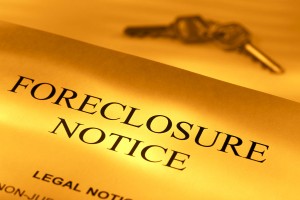Redefine & Explain The Types Of Foreclosures
Posted on Nov 22 in Free Educationby adminPrint

Article From: www.realtown.com
By: Mitchell Sussman
With the collapse of the real estate market, the word “foreclosure” has unfortunately become an often used word in the English language. This article will provide information about the types of foreclosures found in various states and how they work.
In the context of real estate law, foreclosure is the legal process by which a real property lender recovers possession of the real property that secures its loan. Much like the repossession of a car or furniture when the borrower does not pay, foreclosure allows the real property lender to take back the property.
The real property lender can do this because as part of its agreement to loan money to the borrower, the lender is granted a voluntary lien by the borrower which the lender can enforce should the borrower refuse or be unable to pay.
The most common form of foreclosure in the United States is known as a “non – judicial” foreclosure under the provisions of the power of sale clause contained in a mortgage or deed of trust. This method has become the most frequent type of foreclosure proceeding because unlike a “judicial” foreclosure no court action or judicial proceeding is required.
In California, for example, virtually every foreclosure is a “non – judicial” foreclosure because it takes very little time and money to take back the property from the borrower.
The “non – judicial” foreclosure process involves the sale of the property by the mortgage holder without court supervision. This process is generally much faster and cheaper than foreclosure by a court ordered judicial sale and unless stopped voluntarily by agreement between the borrower and lender, by bankruptcy stay or court a ordered stay, can take less than six months.
The “non – judicial” foreclosure has a variety of steps that culminate in a trustee’s sale. At the trustee’s sale the property will be auctioned to the highest bidder. Should bids not be forthcoming the property will revert back to the lender whose loan is in default. If there are bidders, the foreclosing lender can keep the proceeds to pay off its mortgage and any legal costs. Any amounts in excess of the lender’s loan will be used to pay off junior or subordinate liens. Should there be a balance after the payment of all liens it will be paid over to the borrower.
Foreclosure by court action, more commonly known as a “judicial foreclosure,” is available in every state and required by some. This involves a lawsuit in which the lender asks for a sale of the real property under the supervision of a court. As with other court proceedings, the constitutional dictates of “due process” permit the borrower to answer the foreclosure lawsuit and raise a variety of legal defenses. At the conclusion of the foreclosure lawsuit a decision is made by the court in favor of either the lender or borrower. Should the lender prevail, the property is sold and like with the more common “non- judicial” foreclosure the proceeds go first to satisfy the foreclosing lender; then other lien holders; and, finally, the mortgagor/borrower if any proceeds are left.




































































